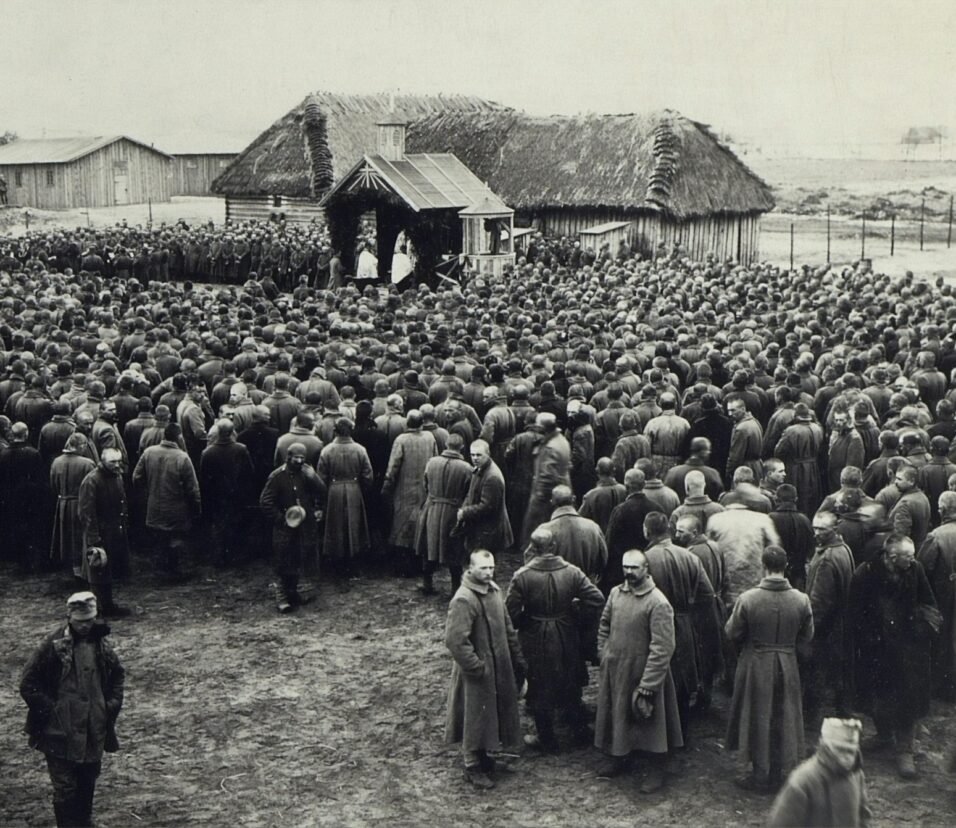Introduction:
The Cold War, characterized by ideological battles and proxy wars between the United States and the Soviet Union, demanded innovative strategic responses. Central to America’s Cold War strategy was the policy of containment, crystallized in the Truman Doctrine. This article explores containment’s origins, the principles of the Truman Doctrine, and their combined impact on shaping decades of international relations.
The Roots of Containment:
Post World War II, the world was primarily bifurcated into two ideological blocs: the democratic-capitalist West led by the US and the communist East led by the USSR. With the rapid spread of communism in Eastern Europe and other parts of the world, U.S. foreign policy strategists sought a way to curb Soviet influence.
Kennan’s “Long Telegram” in 1946 emphasized the need to contain communist power and influence. This formed the basis for the policy of containment: not to provoke an open confrontation, but to prevent the spread of communism wherever it might arise.
The Truman Doctrine: A Formal Introduction
In March 1947, President Harry S. Truman addressed Congress, setting forth what would be known as the Truman Doctrine. At its core, the doctrine pledged American support (both military and economic) to countries resisting communist aggression. Truman proclaimed, “It must be the policy of the United States to support free peoples who are resisting attempted subjugation by armed minorities or by outside pressures.”
This declaration was an explicit statement of American intent to intervene, indirectly or directly, wherever the threat of communism loomed.
Applications and Impact:
Greece and Turkey: The Truman Doctrine’s first test. Both nations faced significant communist threats. With British assistance receding, the US stepped in, providing monetary aid and military advisors, ensuring that neither country fell into the Soviet sphere.
Marshall Plan: An extension of the containment strategy, it aimed to rebuild war-ravaged Europe, strengthening Western European economies to make them less susceptible to communist takeovers.
Korean War: North Korean communist forces invaded South Korea in 1950. Under the containment umbrella, the US and other UN forces intervened, pushing back the North Koreans and later the Chinese.
The Domino Theory:
The notion of the “Domino Theory” came into vogue in the 1950s. This theory posited that the fall of one country to communism could trigger a chain reaction, causing neighboring countries to follow suit, like a row of falling dominoes. President Dwight D. Eisenhower was a notable proponent of this idea. This perspective further strengthened the belief in containment, suggesting that even small, seemingly inconsequential countries could have a profound ripple effect in the larger Cold War strategy.
The Vietnam Quagmire:
Perhaps one of the most controversial applications of containment was the U.S. involvement in Vietnam. Initially, the U.S. provided economic assistance and military advisors to help the South Vietnamese government resist communist North Vietnam. However, the situation escalated, and by the mid-1960s, the U.S. had a significant military presence in Vietnam.
The war became a focal point of contention domestically. The American public grew increasingly disillusioned with the war, sparking significant anti-war movements. Despite the heavy American involvement, North Vietnam captured Saigon in 1975, leading to the unification of Vietnam under communist rule. This event caused many to question the efficacy and worth of the containment policy.
Containment in Other Arenas:
- Latin America: Fear of communism in the Western Hemisphere led to U.S. interventions in countries like Guatemala, where in 1954, the CIA orchestrated a coup against a democratically elected leader perceived as leaning towards communism. The Cuban Missile Crisis of 1962, too, was a direct consequence of efforts to contain communism, in this case, just 90 miles off the American coast in Cuba.
- Middle East: The U.S. engaged in various operations in the Middle East to keep the region free from Soviet influence. The aim was not just ideological but also strategic, given the region’s vast oil reserves.
- Afghanistan: In the 1980s, when the Soviet Union invaded Afghanistan, the U.S. supported Afghan mujahideen fighters, viewing them as freedom fighters against communist aggression. This support included financial aid, weapons, and training.
Reassessment and the End of Cold War:
By the late 1980s, there were signs that the rigid approach of containment was unwinding. With the ascension of Mikhail Gorbachev in the USSR and his policies of glasnost (openness) and perestroika (restructuring), the Cold War dynamics began shifting.
The fall of the Berlin Wall in 1989 symbolized the end of the Cold War era. The dissolution of the Soviet Union in 1991 marked a definitive end to the primary reason for the containment policy.
Critiques and Revisions:
The policy of containment and the Truman Doctrine were not without detractors. Critics argued that it was too aggressive, risking potential direct conflict with the Soviet Union. Others believed it was too Eurocentric, ignoring the nuances of decolonization and nationalist movements in Asia, Africa, and Latin America.
By the 1970s, with détente, the strict policy of containment saw relaxation, emphasizing negotiation and peaceful coexistence more than military confrontation.
Conclusion:
The policy of containment and the Truman Doctrine were foundational to American foreign policy during the Cold War. They represented America’s commitment to halting the spread of communism, even if it meant intervening in the internal affairs of sovereign nations. While it led to numerous proxy conflicts, it also arguably prevented direct large-scale war between the US and the USSR.
The legacy of containment goes beyond the Cold War, influencing American foreign policy into the 21st century, reminding us of a time when the world teetered on the edge of ideological collapse, and strategic diplomacy was the linchpin of survival.







